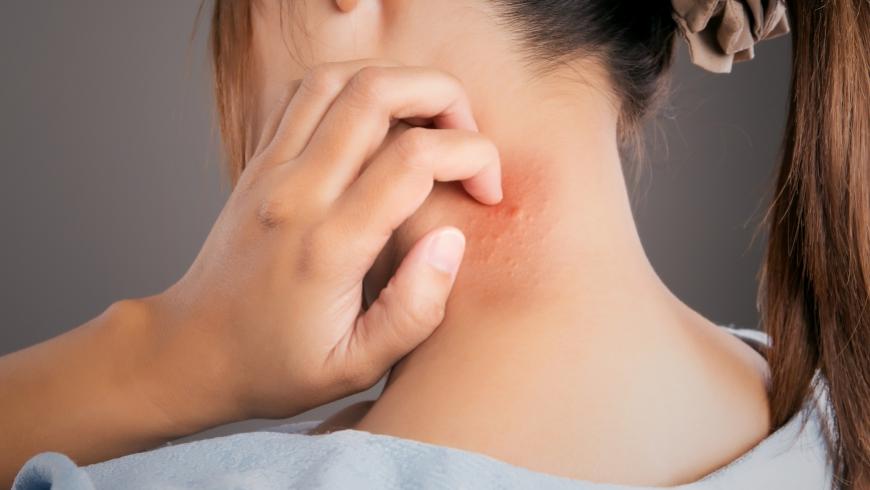
There are around three thousand varieties of rashes and skin diseases. Almost any type of symptom on the skin that involves pain, itching, redness, flaking, blisters or other exceptional symptoms can be called a rash. Just as there are various types of rashes, there are a lot of different possible causes. People of different ages experience different types of rashes, and the symptoms may vary between different times of the year.
Expert consulted for the article: dermatologist Maarit Vaalamo
Itchy skin – when should you see a doctor?
If the rash is mild and it is of minor nuisance, the condition may be monitored for a few weeks. However, if the rash is disturbing, does not seem to subside spontaneously or it involves symptoms you have not experienced before, you should book an appointment with a dermatologist. Experienced dermatologists are often able to determine the type of rash on the basis of its appearance, location and symptoms. Most types of rashes can be treated efficiently.
A rash can develop in any part of the body, from the scalp to the toes. There is no overall method for treating all types of rash. For example, a herpes infection cannot be treated with cortisone.
Eczema
Eczemas are a large group of common rashes. Eczema is an inflammation of the surface layers of the skin that can penetrate the underlying layers of the skin if the condition is prolonged. Types of eczemas include atopic, seborrheic, discoid, irritant and asteatotic eczema.
Learn more: (in Finnish)
• Atopic skin and dermatitis
• Eczema
House dust mite eczema
An atopic eczema can become worse if an allergic reaction to house dust mites is present. In Finland, house dust mite allergy is not a common problem, but symptoms caused by the mites are more prevalent in countries with damp indoor air quality, such as Great Britain.
Stress rash
Stress rash is not a distinct condition, but stress can make a variety of skin disorders worse.
Solar urticaria
The most common type of rash caused by the ultraviolet radiation of the sun, i.e. solar urticaria, is typically located in the arms and the upper chest, and it manifests a couple of hours after exposure to the Sun. The symptoms are common in the spring, and they subside slowly as the summer turns into autumn.
Pityriasis versicolor
Pityriasis versicolor, also known as tinea versicolor, is a relatively common skin disorder that manifests as light spots in tanned skin and as red-brown areas in parts of the skin that have not tanned, especially in the torso and neck area. The condition is caused by the opportunistic infection of the Malassezia (formerly known as Pityrosporum) yeast, naturally present on the skin. The treatment of this condition involves reducing the amount of this yeast. The rash subsides as the amount of the Malassezia yeast is lowered.
Psoriasis
Psoriasis is considered to be a hereditary skin condition that affects approximately up to 1.5–3 of the population of Finland. The symptoms of psoriasis include thick spots of rash that have clear outlines. The typical locations of psoriasis include the scalp, elbows and knees, but, in practice, it can develop anywhere on the skin. In addition to skin symptoms, psoriasis is sometimes associated with nail and joint problems.
Contact dermatitis
Contact dermatitis, i.e. a delayed hypersensitivity reaction, can also cause an itching eczema. Allergens that can possibly cause this reaction include perfumes, preservatives and nickel. The dermatitis develops on the area of the skin which has come into contact with the allergen.
Hen flea
The bites of a hen flea are particularly common in the spring, and they cause the development of itchy spots up to 3–4 cm in diameter that resemble large mosquito bites. The symptoms will subside spontaneously, but they can be so unpleasant that a dermatologist’s help may be required. A rash caused by hen flea bites can be treated with a cortisone cream and antihistamines.
Other skin lesions that resemble a rash
Skin cancer and precancerous skin lesions are more common as people become older and bathe in the sun. Precancerous skin lesions include rough, red and flaking skin lesions that cannot be treated with conventional methods. When the precancerous skin lesions have been identified, they can be treated with cryotherapy that involves the use of liquid nitrogen, for example. Melanoma is typically present in young and middle-aged adults and the elderly, whereas children are very rarely diagnosed with it. Excessive exposure to the sun’s ultraviolet radiation and sunburns experienced in childhood, in particular, increase the risk of melanoma.